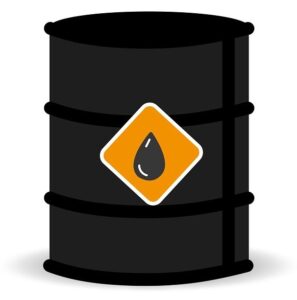In 2024, the crude oil market experienced significant fluctuations influenced by economic uncertainties, and shifting global demand. OPEC, with its allies in OPEC+, has engaged in a dynamic balancing act to manage oil prices, with their production cuts playing a pivotal role in maintaining price stability amid variable demand.
Price Volatility and Market Influences
At the start of 2024, oil prices were buoyed by OPEC+ cuts that aimed to curb global supply. In the first quarter, prices surged as the alliance kept a tight lid on production, with Brent crude reaching $87.48 per barrel and WTI hovering around $83.17. However, as the year progressed, the demand outlook weakened due to slower-than-expected growth in major economies, particularly in Asia and Europe. China, historically a significant driver of global oil demand, saw its economic rebound taper off by mid-2024, dampening demand projections. Consequently, oil prices faced downward pressure, briefly dipping to multi-month lows by late Q2, with Brent nearing $69 per barrel.
The geopolitical landscape also influenced crude oil prices. Tensions in the Middle East and sanctions on Russian oil created an undercurrent of uncertainty. These geopolitical risks often acted as a counterweight to falling demand, with prices rebounding whenever the Middle East showed signs of escalating conflict.
OPEC+ Production Strategy: Tightening and Loosening Supply
To address price instability, OPEC+ implemented a flexible strategy throughout the year. Early in the year, the group continued with their 2023 commitment to production cuts, targeting a collective reduction of over 1 million barrels per day (bpd). Saudi Arabia and Russia led the charge in restricting supply, temporarily supporting prices against declining demand. By mid-2024, however, some OPEC+ members overproduced against their agreed quotas, resulting in internal tensions. To resolve these issues, compensation plans were introduced to keep the group aligned on production targets.
In September, the alliance decided to ease production cuts slightly to meet demand from Asian markets and temper inflationary pressures globally. This decision to gradually increase output allowed more barrels into the market but was calibrated to prevent oversupply, which could have destabilized prices. By October, the phase-out of voluntary cuts led to a small but steady increase in global supply, although the group’s output targets remained tight for most of the year. Analysts noted that this measured reintroduction of supply helped maintain a price floor and assured market players of OPEC+’s control over market dynamics.
OPEC’s 2024 Oil Demand and Supply Outlook
OPEC’s regular reports in 2024 adjusted the demand growth forecast multiple times, reflecting the complex interplay between supply factors and economic conditions. In response to the weaker demand from China, OPEC trimmed its global oil demand growth forecast, projecting it to rise by 1.93 million bpd rather than the earlier forecast of 2.03 million bpd. This marked the third consecutive cut in 2024, and OPEC hinted at the possibility of adjusting production again if demand continued to weaken.
The Middle Eastern and African members within OPEC continued to play a significant role in balancing the supply-demand equation. Saudi Arabia and the UAE pushed for a strategy that balanced supply cautiously, emphasizing long-term stability over short-term price gains. The UAE, for example, received an adjusted quota of 300,000 bpd starting in early 2025, signaling its commitment to stabilize prices while positioning itself as a key supplier for Asian markets.
The Impact of U.S. Shale and Canadian Oil
The global oil supply equation in 2024 was further complicated by non-OPEC producers, particularly the United States and Canada. The U.S. maintained steady production levels despite some cuts by smaller producers in response to low prices in Q2. U.S. shale production remained resilient, although costly extraction processes rendered it more sensitive to price drops below $70 per barrel. Canadian oil also played a growing role in supplying Asian markets, especially after the Trans Mountain Pipeline Expansion (TMX) began transporting Canadian crude to the Pacific Coast, reducing transport costs and transit times to Asia.
Price Forecasts and the Path Forward
For the remainder of 2024, oil prices are expected to hover within a range, supported by OPEC’s production controls but capped by weaker-than-expected demand. Analysts anticipate that Brent crude will average between $75 and $85 per barrel, while WTI may remain slightly below Brent by a margin of $5 to $7 per barrel. By late 2024, OPEC+ has plans to reassess its strategies, with the possibility of new cuts in 2025 if demand fails to rebound, especially as global markets continue to contend with inflation and potential recessions.
As 2024 winds down, OPEC faces the challenge of maintaining cohesion among its members while addressing the global call for energy security. The alliance’s agile approach to production and strategic cuts throughout the year has underscored its importance in the global energy landscape, ensuring that oil prices remain responsive to economic realities and geopolitical developments.
OPEC’s Role in 2024 and Beyond
OPEC’s cautious and flexible approach in 2024 has been instrumental in supporting prices amid fluctuating demand. However, as new supply sources emerge and economic conditions shift, OPEC’s ability to balance market needs with member interests will be critical.
For 2025, the outlook remains guarded, with OPEC expected to continue its cautious approach to supply adjustments. While geopolitical tensions and economic growth will dictate short-term price movements, OPEC’s continued cooperation with its allies in OPEC+ remains vital for long-term market stability. The group’s actions in 2024 have solidified its influence, setting the stage for another pivotal year in global energy markets.



